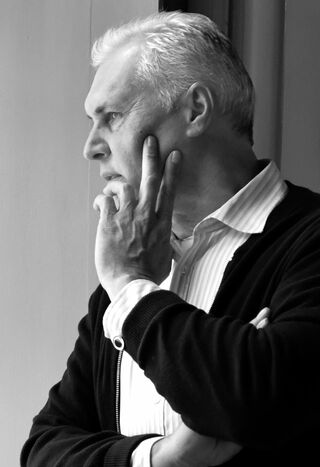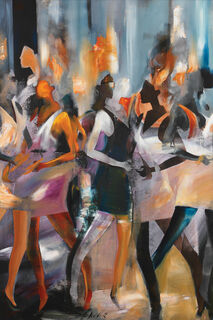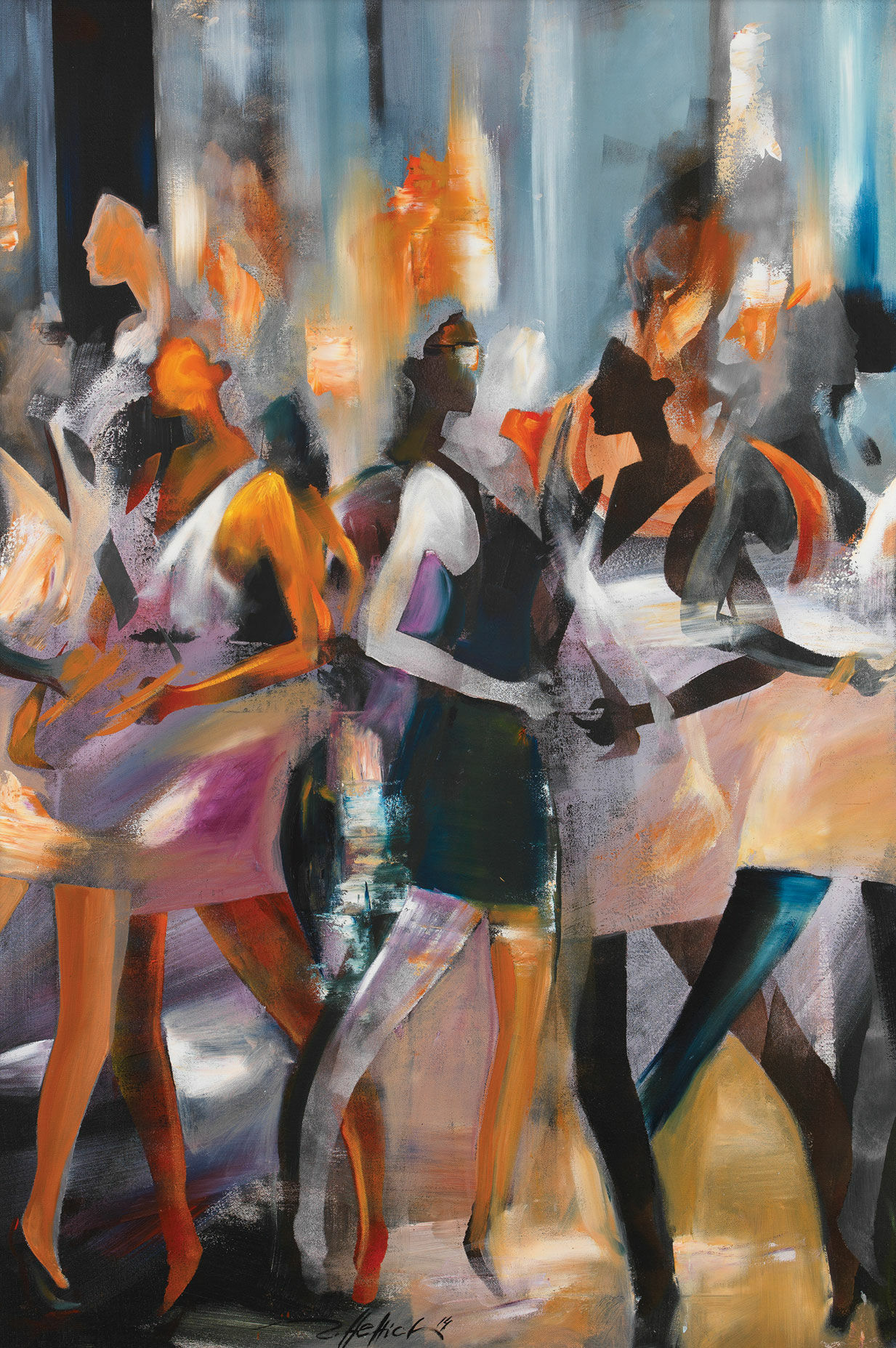Picture "Gathering II" (2014), on stretcher frame


Picture "Gathering II" (2014), on stretcher frame
Quick info
limited, 199 copies | numbered | signed | reproduction, Giclée print on canvas | on stretcher frame | size 90 x 60 cm (h/w)
Detailed description
Picture "Gathering II" (2014), on stretcher frame
The works of Robert Hettich, born in 1964, oscillate skilfully between abstraction and concretisation, between colour impression and figurative representation. The motifs remain recognisable, but the main effect is a mood, an emotion that communicates itself to the viewer precisely through the groups of people dissolved in colour surface and composition.
"Gathering I" from 2014 carries out the theme in a variant brought onto artist's canvas using the Giclée technique and corresponding with each other, but also impressive individually.
Giclée print on canvas, stretched on stretcher frame. Limited to 199 copies, numbered and signed by the artist. Size 90 x 60 cm (h/w).

About Robert Hettich
Born in 1964, Painter, Illustrator, Graphic Designer
When the Russian-German artist Robert Hettich came to Germany in 1988 in his mid-twenties, he was immediately able to assert himself on the market as a graphic designer. He had studied graphic arts, art and painting in Leninabad (now Khujand), Tajikistan. This education proved to be extremely solid because it laid emphasis on imparting basic artistic knowledge and mastering "handicraft" techniques. However, after studying at the University of Applied Sciences and Arts in Hanover, he passed another diploma examination to become a graphic designer. This double training path may be one explanation for his great versatility.
Hettich works as a painter (oil, acrylic, watercolour), as an illustrator and in classical graphic design. His works are highly traded in collectors' circles because he combines technical perfection with creative originality.
The works of Robert Hettich oscillate skilfully between abstraction and concretisation, between colour impression and figurative representation. The motifs remain recognisable, but the main effect is a mood, an emotion that communicates itself to the viewer precisely through the groups of people dissolved in colour surface and composition.
The artist is known through numerous exhibitions at home and abroad - such as his recent participation in the 8th and 9th Beijing International Art Biennale.
Depiction of typical scenes from daily life in painting, whereby a distinction can be made between peasant, bourgeois and courtly genres.
The genre reached its peak and immense popularity in Dutch paintings of the 17th century. In the 18th century, especially in France, the courtly-galant painting became prominent while in Germany the bourgeois character was emphasised.
Giclée = derived from the French verb gicler "to squirt, spurt".
The giclée method is a digital printing process. It is a high-resolution, large-format printout on an inkjet printer with special different-coloured dye- or pigment-based inks (usually six to twelve). The colours are fade-proof, i.e. resistant to harmful UV light. They have a high richness of nuance, contrast and saturation.
The giclée process is suitable for art canvases, handmade and watercolour paper as well as for silk.


